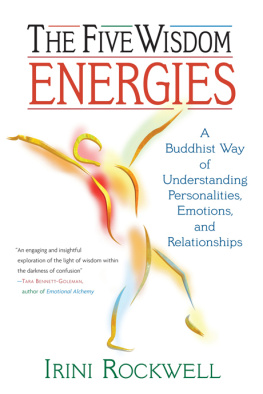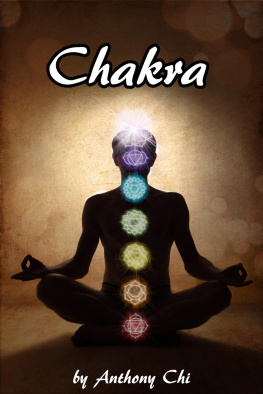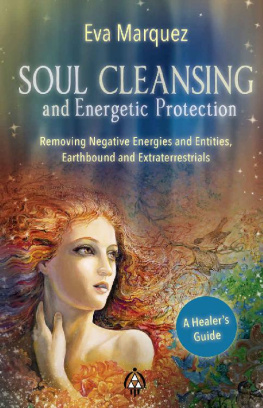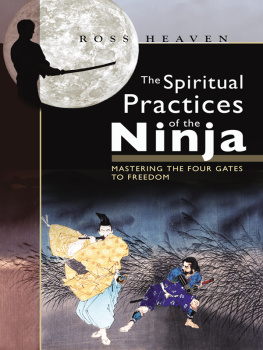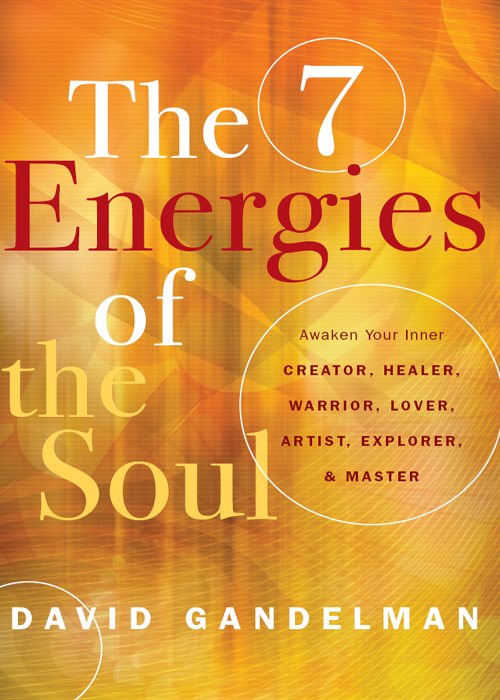


Copyright 2022 by David Gandelman
All rights reserved, including the right to reproduce
this work in any form whatsoever, without
permission in writing from the publisher, except
for brief passages in connection with a review.
Cover design by Laura Beers
Cover art by Creations/Shutterstock
Print book interior design by Frame25 Productions
Hierophant Publishing
San Antonio, TX
www.hierophantpublishing.com
If you are unable to order this book from your local
bookseller, you may order directly from the publisher.
Library of Congress Control Number: 2021949056
ISBN: 978-1-950253-19-7
10 9 8 7 6 5 4 3 2 1
www.redwheelweiser.com
www.redwheelweiser.com/newsletter
Contents
Introduction
First Steps
At sixteen, I was leading an American suburban teenage lifeplaying ice hockey, trying to date, and screwing around with my friendsuntil the day my brother came home from college and dragged me to a bookstore. He had been experimenting with, let's say, mind-altering substances, and he wanted me to open my mind. He also thought that I was lazy and never read anything. So he forced me to choose a book.
Randomlybut, looking back, synchronisticallyI picked up a book by spiritual teacher Eckhart Tolle called The Power of Now (New World Library, 1999). After reading just a few pages about how our minds are constantly lost to the past and the future, causing us miss the present moment, something deep in my consciousness shifted. It was as if I had been asleep in a dark room my entire life, hypnotized by the pull of time, until someone flipped a switch that woke me up with a blinding light.
I began reading and meditating for hours every day. My parents and friends thought I was going a bit crazy, but my life started improving rapidly. I was able to focus more clearly and stay calm in difficult situations. My grades went up; I started dating the most amazing and kindest girl in school; and I was accepted at a college I had never thought would take me.
I also began to feel a spiritual thirst. I wanted to meet other people who had similar experiences, but I didn't know how. So I started looking into the eyes of people on the street to see if there was a light behind thema spark. For some reason, I thought I would be able to see in their eyes if they were asleep or awake. It wasn't until later that I heard the saying: The eyes are the window to the soul. When I did, I immediately knew that what I had been looking for was the soulthe lightin people.
In my search for kindred spirits and more knowledge about life, I earned a degree in philosophy. I lived in ashrams in the Himalayas and traveled through East Asia. I studied with several gurus and spent seven years learning the mystic healing arts in Hawaii.
I did all this because, even after my initial awakening at sixteen, I still had so much to learn. I had to grow, to travel, to tap into my creativity. I had to experience heartbreak and loss. I had to build a career and slowly develop into a teacher. I had to learn who I really was, and how to live a truly meaningful life. In this way, my experience was similar to that of many spiritual seekers who came before me. Little did I know that these experiences would lead me to discover the seven archetypal energies that would bring my own soul into balance.
This book tells the story of my journey. In it, I explore each of these unique energies in balance, in deficit, and in excess. Using stories from my own life and those of my students, I examine the inherent challenges of each energy, as well as the consequences of their imbalance. Then I suggest specific tools and practices that can help you unlock the powers and gifts of each energy so you can begin to recognize that what you may see as problems in your life are actually opportunities to unleash the power of your soul.
We all embody all seven energies all the time, although many of us may feel particularly out of touch with one or more of them at any given moment. So, in addition to introducing and discussing these energies in depth, each chapter offers suggestions for how you can bring them into balance and apply them in your day-to-day life. My hope is that, when you understand your own soul energy through these seven archetypes, you will be able to find your own answers to life's challenges and questions.
The key, as you will discover here, is balance. Have you ever heard a choir sing? One person begins singing softly and beautifully, then another joins in, and then another. All of a sudden, the entire choir bursts into song and a harmonious, almost magical, sound emerges. That's how the seven energies of the soul work together in us when they are in balance. I hope this book will help you create that harmony on your own journey through life.
Chapter 1
Energy and Self-Realization
The two most important days in your life are the
day you are born and the day you find out why.
Mark Twain
Since the beginning of time, humans have sought out masters, oracles, and sages to find the meaning of life and answers to other deep questions. In ancient Greece, people walked hundreds of miles to the oracle at Delphi to be healed and to have their questions answered. In the time of the Buddha, groups of hundreds, sometimes thousands, of monks gathered to follow him across India, sitting and meditating, searching for answers to their deepest questionssearching for self-realization.
After forty-five years of traveling and teaching, as he was breathing his last breath, the Buddha told his followers: Don't look to me for your answers; look inside yourself I've given you the tools; now use them on yourself.
Some listened. But most built statues to their teacher and formed different religious sects around his teachings. Then they began praying to him for their answers. Over the centuries, the Buddha became an object of worship to millions. Sound familiar? You could say the same things about Jesus, and about many other spiritual teachers as well.
The story usually goes like this. These teachers experience great suffering and retreat into a forest or a cave or climb a mountain. There, through self-reflection, they discover profound truths deep within themselves, which they then share with others. After departing their bodies, they ascend to the heavens and watch as their disciples misinterpret their teachings, fight among themselves, and fall back on dogma and ideology, reducing their teachings to a poor reflection of their original insights.
I admit that I have been guilty of playing this game myself. When I first went to India, I walked around with pictures of all my favorite gurus tucked into my pocket like baseball cards. I traveled from ashram to ashram, from guru to guru, listening to anyone with a beard, always believing that I would find someone else holding the key to my own self-realization. Think of how you feel when you open your high school yearbook and get a bit red in the face when you see what a dork you were. That's how I feel sometimes when I think about how I used to idealize gurus.
I remember getting into a taxi in Thailand when I was at the beginning of my spiritual journey in my early twenties. The driver had one of those fat Buddha sculptures sitting on his dashboard. When I asked him about his connection to the Buddhist tradition, he rubbed the Buddha's belly and said: Buddha brings me money. So much for my naive fantasy that all Buddhists were devout sages only interested in enlightenment!
Next page


